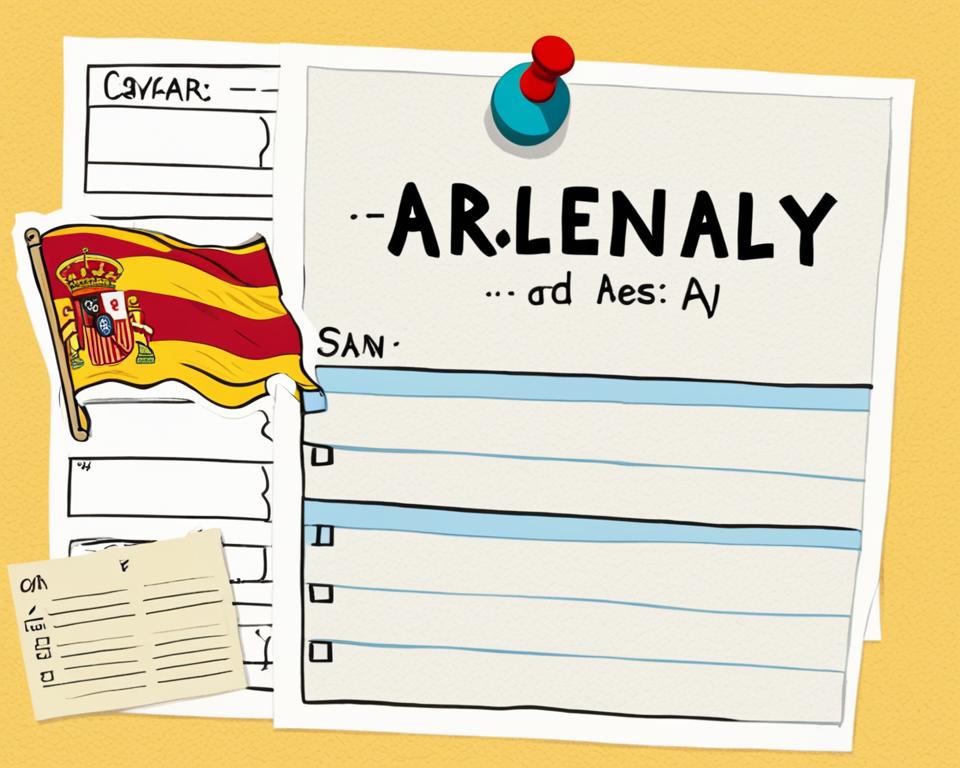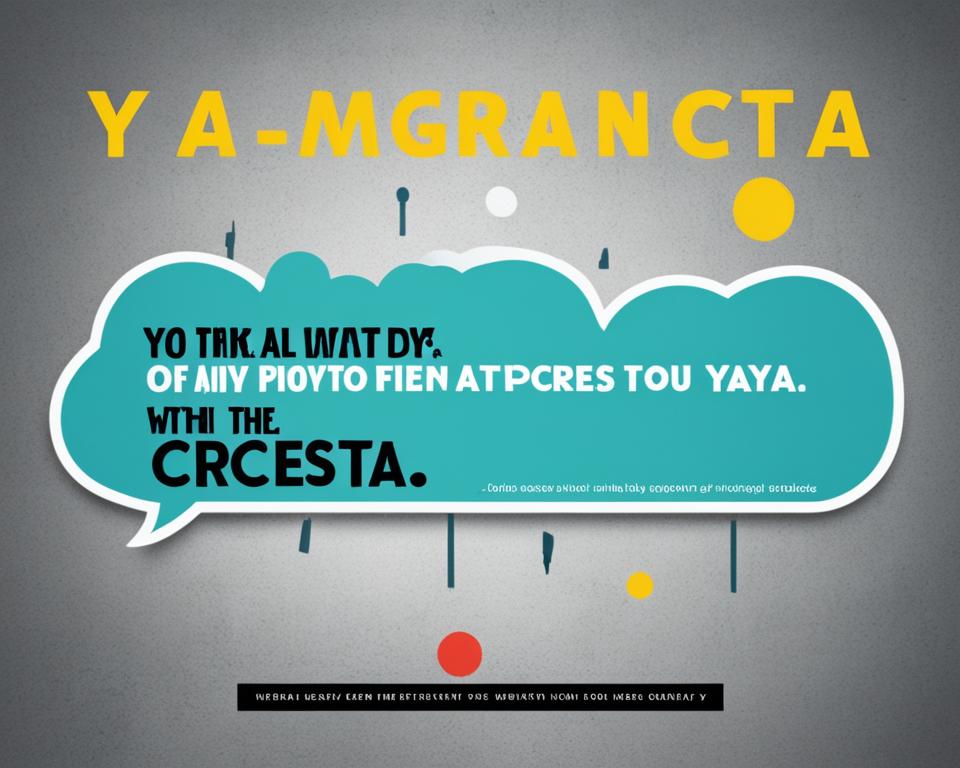When it comes to enhancing your fluency and expressiveness in Spanish conversations, understanding the versatile uses of the adverb “ya” is key. In this article, we will explore the various meanings and contexts in which “ya” can be used.
Key Takeaways
- “Ya” is a multifunctional adverb in Spanish that can be translated as “already,” “now,” “soon,” “finally,” and more.
- It can be used to express the completion of an action, indicate the present moment, convey a sense of urgency, or emphasize a point.
- Understanding the different uses of “ya” will greatly enhance your ability to communicate effectively in Spanish.
- Practice incorporating “ya” into your conversations to improve your language skills.
- Explore additional meanings and contexts in which “ya” can be used to expand your vocabulary and language proficiency.
The Meaning of Ya

The word “ya” holds multiple meanings and plays a significant role as an adverb in the Spanish language. In this section, we will explore the basic definition and usage of “ya” in Spanish conversations.
As an adverb, “ya” can express various nuances depending on the context in which it is used. It is essential to understand these nuances to effectively communicate in Spanish. Let’s delve into the different meanings of “ya” in Spanish:
-
Already: One of the most common uses of “ya” is to denote the concept of “already.” It indicates that something has happened or been completed before a specified time. For example:
Ya he comido. (I have already eaten.)
Ella ya llegó. (She has already arrived.)
-
Now: “Ya” can also convey the meaning of “now” in certain situations. However, it is important to note that “ya” and “ahora” (the Spanish word for “now”) are not always interchangeable. While “ahora” refers to the present moment, “ya” implies a sense of immediacy or an action happening sooner than expected. Here’s an example:
Vamos al cine ya. (Let’s go to the cinema now / right away.)
Voy a hacerlo ahora. (I’ll do it now.)
-
Soon or Right Away: Another meaning of “ya” is to express the idea of “soon” or “right away.” This usage conveys a sense of urgency or promptness. Here’s an example:
Termina tus deberes ya. (Finish your homework soon / right away.)
Espero la respuesta ya. (I’m waiting for the response soon / right away.)
-
Finally or At Last: “Ya” can also indicate the notion of “finally” or “at last.” It conveys a sense of relief or accomplishment after a prolonged period. For instance:
Ya hemos terminado el proyecto. (We have finally finished the project / At last, we finished the project.)
Ya encontré las llaves. (I’ve found the keys at last.)
The versatility of “ya” allows Spanish speakers to express time, urgency, and completion in various contexts. Understanding its different meanings enhances fluency and adds depth to conversations in Spanish.
Now that we have explored the basic meaning of “ya” in Spanish, let’s further examine its use as “already” in the next section.
Ya as “Already”

One of the most common uses of the adverb “ya” in Spanish is to indicate the concept of “already”. This versatile word allows you to convey that something has taken place before a certain point in time. Let’s explore how to use “ya” meaning already in different contexts:
1. Actions that have occurred in the past
“Ya” is commonly used to express that an action or event has already taken place. It can be used with various verb tenses, such as the present perfect or the past simple. Take a look at the following examples:
Ya he comido. (I have already eaten.)
Ya llegó el autobús. (The bus has already arrived.)
2. Confirming information
When confirming information or responding to a question, “ya” can be used to indicate that something is already known or true. Here are a couple of examples:
¿Ya sabes la respuesta? (Do you already know the answer?)
Sí, ya lo sé. (Yes, I already know it.)
3. Completion of an action
In some cases, “ya” can be used to convey the completion of an action or reaching a certain state. Here’s an example:
Ya terminé mi tarea. (I have already finished my homework.)
4. Showing impatience
When expressing impatience or frustration, “ya” can be used to convey a sense of urgency or to urge someone to do something. Consider the following example:
¡Ya cállate! (Just be quiet already!)
By understanding the various uses of “ya” as “already”, you can enhance your Spanish conversations and express yourself more effectively. Practice using “ya” in different contexts to become more fluent in Spanish!
Ya as “Now”

Apart from its meaning as “already,” the Spanish adverb “ya” also has a significant role in conveying the concept of “now.” Understanding how to use “ya” in this context is essential for effective communication in Spanish.
When comparing “ya” and “ahora” (another Spanish word for now), there are subtle differences in their usage. While “ahora” typically refers to the present moment in a general sense, “ya” emphasizes a sense of immediacy or the idea of “right now.”
Let’s take a look at some examples:
“Voy a salir ahora.” (I’m going to leave now.)
“Voy a salir ya.” (I’m going to leave right now.)
The first sentence using “ahora” suggests leaving sometime in the present, whereas the second sentence using “ya” indicates a more immediate departure, emphasizing the urgency. The use of “ya” adds a layer of emphasis and conveys a sense of “now” that “ahora” may not capture.
Additionally, “ya” can be used to express the meaning of “now” when presenting new information or introducing a change in a situation. For example:
“Ya entiendo.” (I understand now.)
“Ya sé la respuesta.” (I know the answer now.)
In these examples, “ya” signifies a shift in comprehension or knowledge, indicating the understanding or awareness of something in the present moment.
It’s important to note that the use of “ya” as “now” depends on the context and the intended emphasis. In some cases, “ahora” may be more suitable. It’s essential to practice and observe how native Spanish speakers use these words in different situations to develop a nuanced understanding of their usage.
Let’s see a visual representation comparing the use of “ya” and “ahora” in Spanish:
| Word | Meaning | Usage |
|---|---|---|
| Ya | Now, Right now | Conveys immediacy or a sense of “right now.” |
| Ahora | Now | Refers to the present moment in a general sense. |
Ya as “Soon” or “Right Away”

In Spanish, the adverb “ya” can also convey the meaning of “soon” or “right away.” This versatile word allows you to express a sense of urgency or the imminent nature of an action. Let’s take a look at some examples:
- Quiero verte ya. (I want to see you soon/right away.)
- Vamos a salir ya. (We’re going to leave soon/right away.)
- Termina tu tarea ya. (Finish your homework soon/right away.)
When using “ya” to mean “soon” or “right away,” it’s essential to consider the context and tone of the conversation. This sense of urgency can be conveyed through intonation or by emphasizing the word “ya.”
¡Apúrate, tenemos que irnos ya! (Hurry up, we have to leave right away!)
Remember, using “ya” in this context can apply to various situations, such as meeting up with someone, completing a task promptly, or taking immediate action. Let’s look at a table summarizing the different meanings of “ya” in Spanish:
| Meaning | Example |
|---|---|
| “Already” | El libro ya está publicado. (The book is already published.) |
| “Now” | Voy al supermercado ya. (I’m going to the supermarket now.) |
| “Soon” or “Right Away” | Necesito tu respuesta ya. (I need your answer soon/right away.) |
| “Finally” or “At Last” | ¡Ya llegaste! (You finally/at last arrived!) |
Understanding the different uses of “ya” in Spanish enhances your conversational skills and allows you to express yourself more effectively. Whether you’re communicating a sense of immediacy or conveying a completed action, “ya” is a valuable adverb to incorporate into your Spanish repertoire.
Ya as “Finally” or “At Last”

One of the versatile uses of the Spanish adverb “ya” is to convey the sense of “finally” or “at last.” This meaning can be used to express relief or satisfaction when something anticipated or long-awaited finally happens. Let’s explore some examples of how “ya” can be used in this context.
Después de tanto trabajo, ¡ya terminé el proyecto! At last, I finished the project after so much work!
In this example, “ya” is used to convey the feeling of relief and accomplishment after completing a project that required a lot of effort. It adds emphasis to the sense that the task has been completed and can evoke a sense of satisfaction.
Ya llegaron las vacaciones; ¡por fin podremos descansar! Finally, the vacations have arrived; we will finally be able to rest!
In this case, “ya” is employed to express the excitement and anticipation of finally having a break and being able to rest. It emphasizes the long-awaited nature of the vacations and enhances the feeling of relief.
It is important to note that the use of “ya” in this context is subjective and can vary depending on the speaker’s perspective and the situation. It often conveys a personal sense of achievement or fulfillment.
Using “Ya” for “Finally” or “At Last”:
When using “ya” to convey the meaning of “finally” or “at last” in Spanish, consider the following:
- Use “ya” before the verb to emphasize the completion of an action or the arrival of a desired event.
- Combine “ya” with other words or expressions to add further emphasis or emotion.
- Consider the context and tone of the conversation to ensure the appropriate use of “ya.”
Now, let’s summarize the different uses of “ya” we’ve explored so far in this article.
| Use of “Ya” | Meaning |
|---|---|
| “Already” | Indicates an action that has already taken place. |
| “Now” | Expresses the concept of “now” or “right now.” |
| “Soon” or “Right Away” | Conveys the idea of something happening soon or immediately. |
| “Finally” or “At Last” | Expresses relief or satisfaction when something anticipated or long-awaited finally happens. |
| Other Uses | Diverse uses in different contexts, including conditional statements and emphasis. |
Understanding the various meanings and uses of “ya” can greatly enhance your fluency and proficiency in Spanish conversations. Practice incorporating “ya” into your language skills and enjoy the expressive power it offers.
Ya in Conditional Statements

In Spanish, the adverb “ya” can be used in conditional statements or if-clauses to express specific conditions and their outcomes. By incorporating “ya” into these constructions, speakers can convey nuances of certainty, possibility, or insistence. Understanding how to use “ya” in conditional statements is essential for effective communication in Spanish.
When using “ya” in conditional statements, it is important to remember the structure typically consists of the conditional conjunction “si” (if), followed by the verb in the conditional tense, and then “ya” before the main clause. This structure allows speakers to express hypothetical situations and their potential consequences.
Here are some examples:
Si estudias más, ya aprobarás el examen.
If you study more, you will pass the exam.
Si tengo tiempo mañana, ya te llamaré.
If I have time tomorrow, I will call you.
These examples show how “ya” adds emphasis and reinforces the outcome of the conditional statement. It implies a sense of certainty or insistence on the expected result.
It is important to note that the use of “ya” in conditional statements is not always necessary, and its inclusion depends on the context and desired emphasis. Additionally, the placement of “ya” within the sentence may vary, allowing for flexibility in expressing different shades of meaning.
By incorporating “ya” into conditional statements, Spanish speakers can enhance their ability to express hypothetical situations with clarity and conviction. The use of “ya” adds a layer of certainty or insistence, effectively conveying the intended meaning in conversations.
Ya for Emphasis
In addition to its other uses, “ya” can also be employed to add emphasis in Spanish. By including “ya” in a sentence, you can strengthen its meaning and convey a sense of urgency or importance. Let’s take a look at some examples:
“¡Ya basta!” – Enough already!
“Esto es importante, ¡ya lo verás!” – This is important, you’ll see!
As you can see, adding “ya” to these sentences emphasizes the speaker’s frustration, insistence, or certainty. It elevates the overall tone and conveys a stronger message to the listener.
To further illustrate the use of “ya” for emphasis, consider the following scenario:
Person A: No estás entendiendo lo que digo.
Person B: ¡Ya entiendo! Por favor, explícame una vez más.
In this conversation, Person B uses “ya” to show that they finally understand what Person A is saying. The addition of “ya” adds emphasis to their response, indicating their comprehension and eagerness to hear further explanation.
When using “ya” for emphasis, it’s important to consider the context and tone of the conversation. This can help you determine when and how to incorporate it effectively.
Summary:
In summary, “ya” can be used for emphasis in Spanish to strengthen the meaning of a sentence or convey a sense of urgency. Its inclusion adds weight to a statement and can help communicate frustration, insistence, or certainty. Understanding how to utilize “ya” for emphasis will enhance your ability to express yourself confidently in Spanish conversations.
Other Uses of Ya

In addition to its common meanings as “already,” “now,” “soon,” and “finally,” the Spanish adverb “ya” can also have other uses and additional meanings depending on the context. Understanding these various uses will help you to further enhance your fluency and versatility in Spanish conversations.
“Ya no” can be used to express “no longer” or “not anymore.” For example:
Ya no vivo en Madrid. (I no longer live in Madrid.)
Ya no hablo con ella. (I don’t speak to her anymore.)
In certain contexts, “ya” can also convey a sense of impatience or frustration. It can be used to express annoyance or a desire for something to happen immediately. For example:
- ¡Ya basta! (Enough already!)
- Tengo hambre, ¿puedo comer ya? (I’m hungry, can I eat now?)
Furthermore, “ya” can be used as a filler word to indicate a pause or a moment of reflection in a conversation. It is similar to the English expressions “umm” or “well.” For example:
- ¿Qué opinas sobre este tema? – Ya, no estoy seguro. (What do you think about this topic? – Well, I’m not sure.)
- ¿Has terminado tus deberes? – Ya, los he terminado. (Have you finished your homework? – Um, yes, I have finished them.)
These are just a few examples of the less common uses of “ya” in Spanish. Its versatility allows it to convey different meanings depending on the context. By familiarizing yourself with these various uses, you can enhance your understanding and proficiency in Spanish conversations.
Stay tuned for the conclusion of our exploration of the uses of “ya” in Spanish, where we recap the key points discussed throughout the article and encourage you to incorporate this versatile adverb into your language skills.
Conclusion
In conclusion, the adverb “ya” holds significant importance in Spanish conversations, offering a range of versatile uses. Throughout this article, we have explored the various meanings of “ya” and how it can enhance fluency and expressiveness in the language.
We have discussed how “ya” can indicate the concept of “already,” emphasizing the completion of an action. Additionally, “ya” can express the idea of “now,” distinguishing it from the word “ahora.” It can also convey the notions of “soon” or “right away,” adding urgency to a statement. Furthermore, “ya” can be used to signify “finally” or “at last,” highlighting the culmination of an event or action.
Moreover, we have explored how “ya” can be used in conditional statements, providing a specific structure for if-clauses. It can also be utilized for emphasis, adding strength and urgency to a sentence. Lastly, we have touched upon other less common uses of “ya” in different contexts.
Understanding these diverse uses of “ya” will greatly contribute to your mastery of Spanish and enable you to engage in more meaningful and nuanced conversations. We encourage you to practice incorporating “ya” into your language skills, refining your understanding and fluency. By doing so, you will enhance your ability to express yourself effectively in Spanish.
FAQ
What is the meaning of “ya” in Spanish?
“Ya” is an adverb in Spanish that has various meanings depending on the context. It can be translated as “already,” “now,” “soon,” “finally,” or “at last,” among others.
How to use “ya” to express “already” in Spanish?
When using “ya” to indicate “already” in Spanish, it is typically placed before the verb. For example: “Ya comí” (I already ate).
How does “ya” differ from “ahora” when expressing “now” in Spanish?
While both “ya” and “ahora” can mean “now” in Spanish, “ya” often carries a sense of immediacy or urgency, indicating something happening at this moment. On the other hand, “ahora” can refer to the present time in a more general sense.
Can “ya” also mean “soon” or “right away” in Spanish?
Yes, “ya” can be used as an adverb to express the idea of something happening “soon” or “right away.” For example: “¡Ya voy!” (I’m coming right away!).
In what context can “ya” be used to convey the meaning of “finally” or “at last” in Spanish?
“Ya” is commonly used to express a sense of relief or accomplishment, indicating that something has happened “finally” or “at last.” For instance: “Ya terminé el proyecto” (I finally finished the project).
How is “ya” used in conditional statements or if-clauses in Spanish?
In conditional statements, “ya” is typically placed before the conditional verb to indicate a condition that has already been met. For example: “Si ya tienes tiempo, podemos salir” (If you already have time, we can go out).
Can “ya” be used for emphasis in Spanish?
Yes, “ya” can be added to a sentence in Spanish to add emphasis or convey a sense of urgency. It strengthens the meaning of the sentence. For instance: “Ya lo dije varias veces” (I already said it several times).
Are there any other uses of “ya” in Spanish?
Besides the mentioned uses, “ya” can have additional meanings in different contexts. Its versatile nature allows it to be used in various ways depending on the situation.
What is the significance of understanding the uses of “ya” in Spanish conversations?
Understanding the multiple uses of “ya” in Spanish can greatly enhance fluency and expressiveness in conversations. It allows for more nuanced communication and adds depth to language skills.




